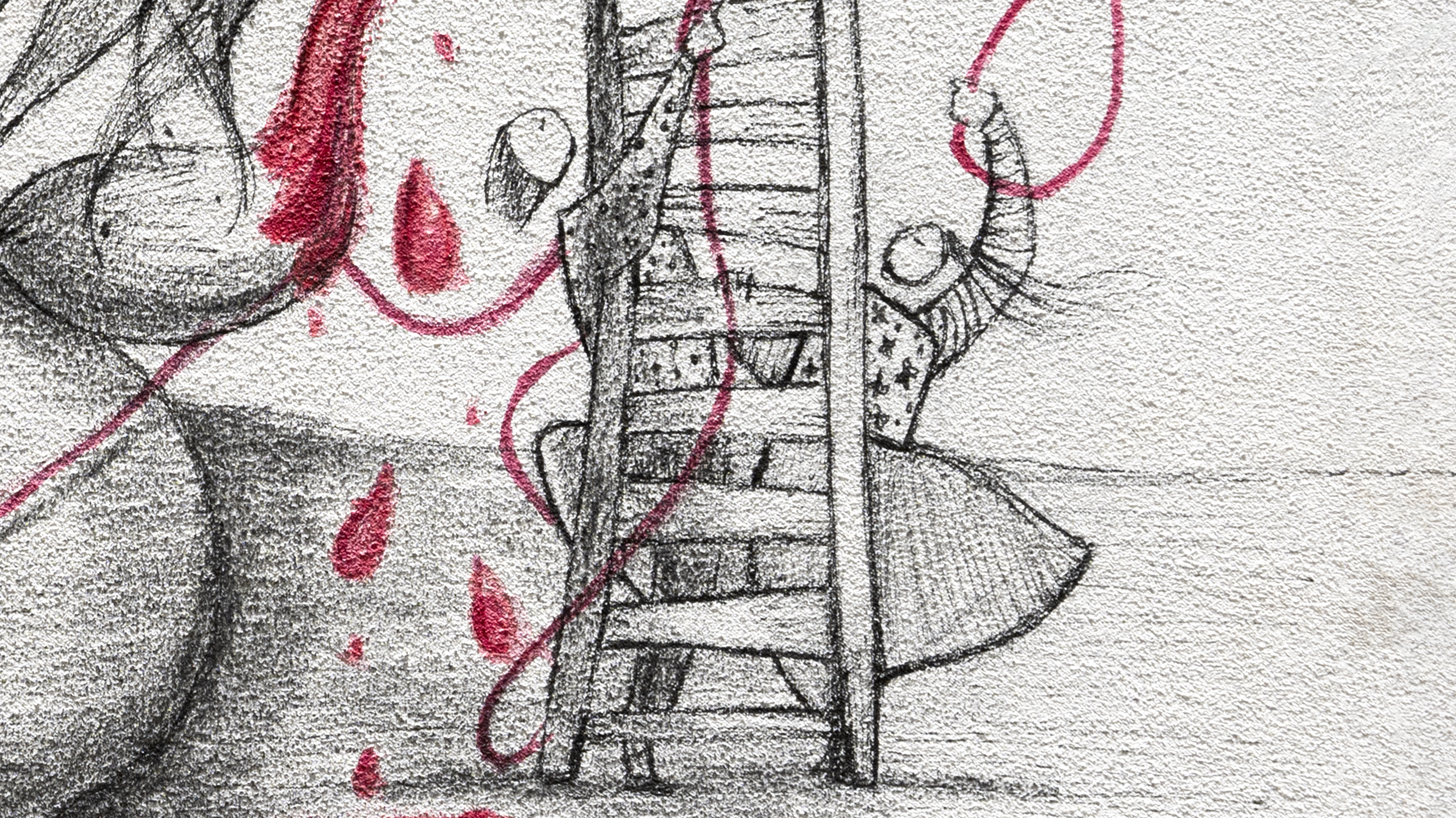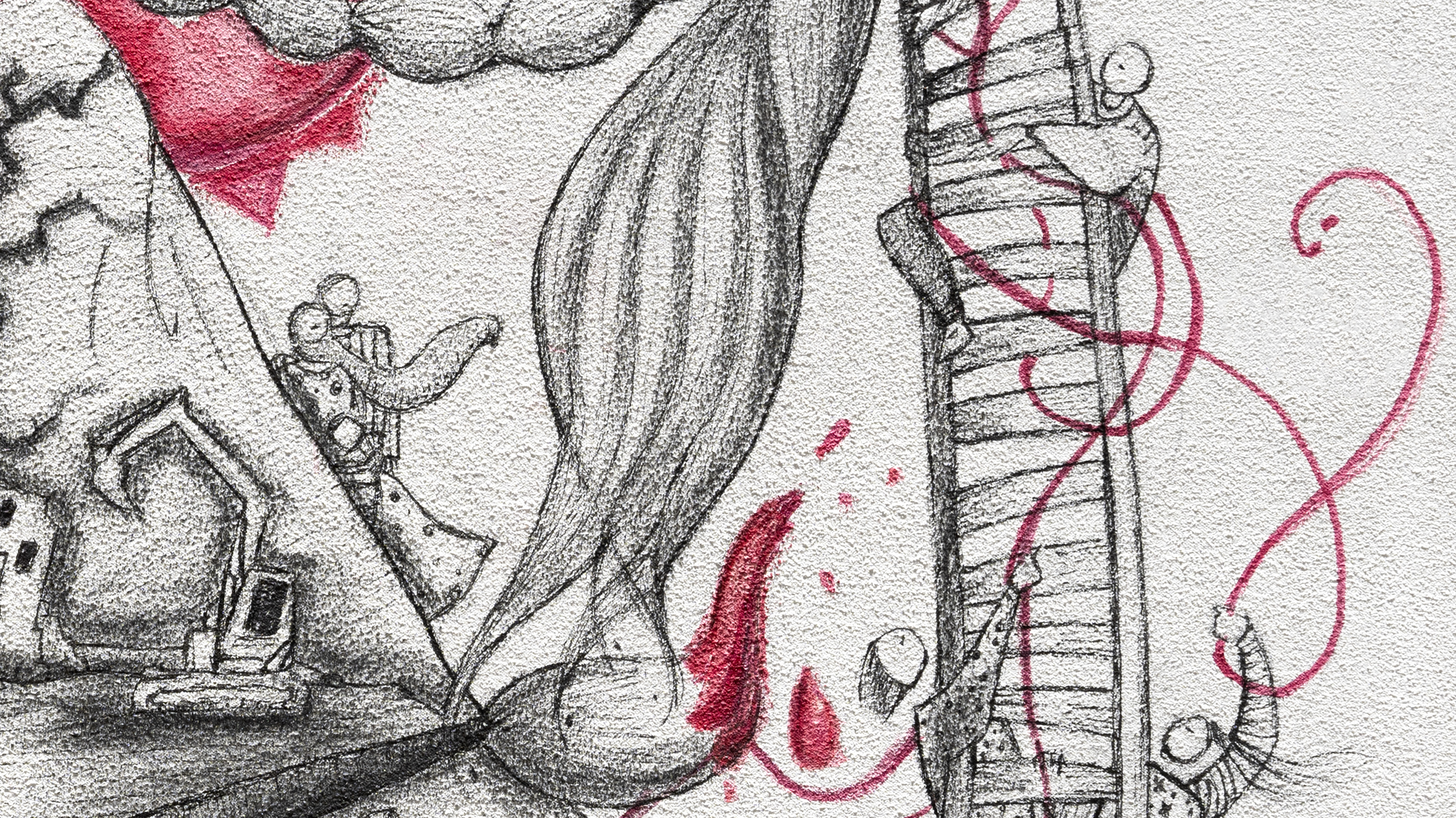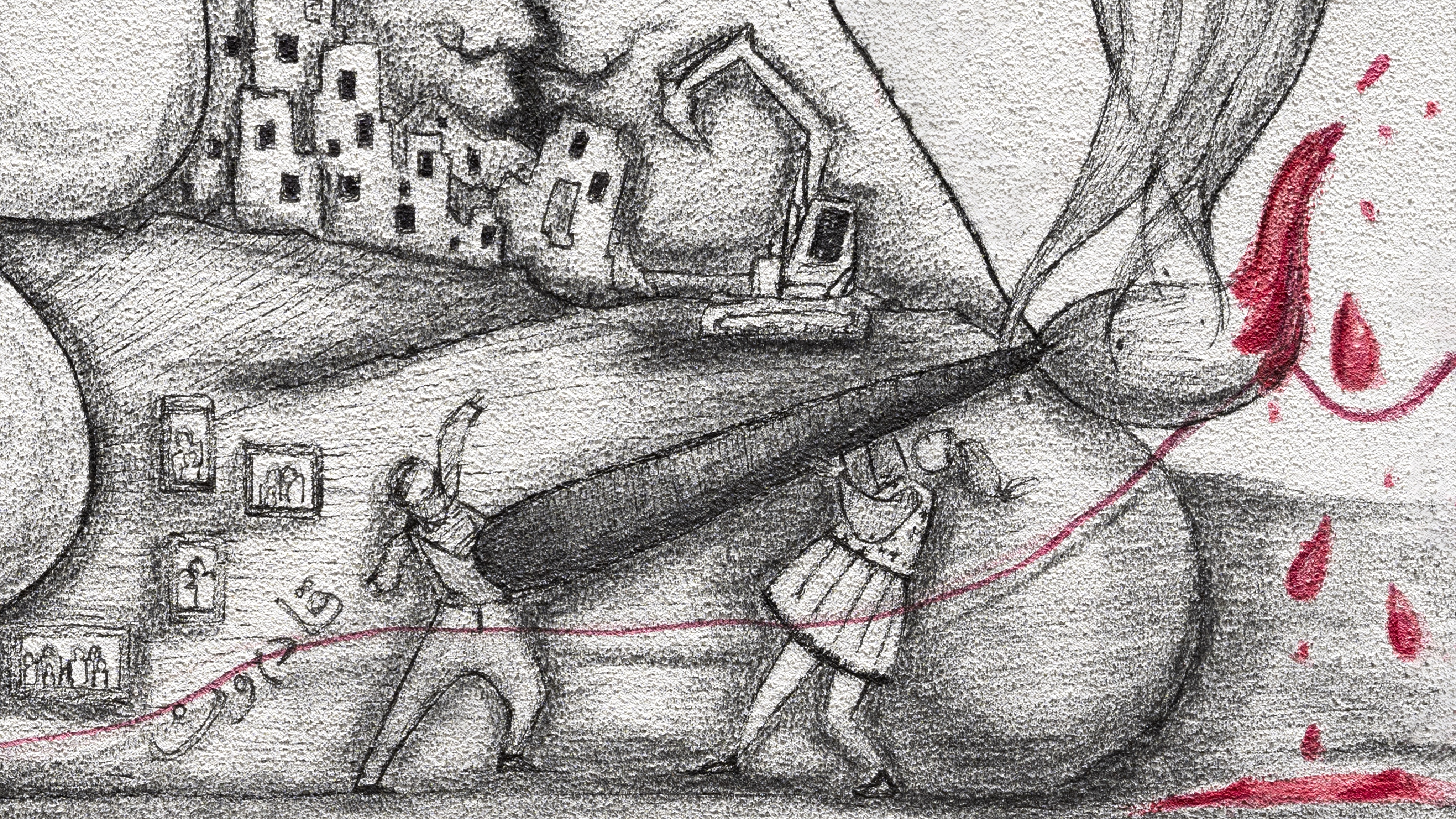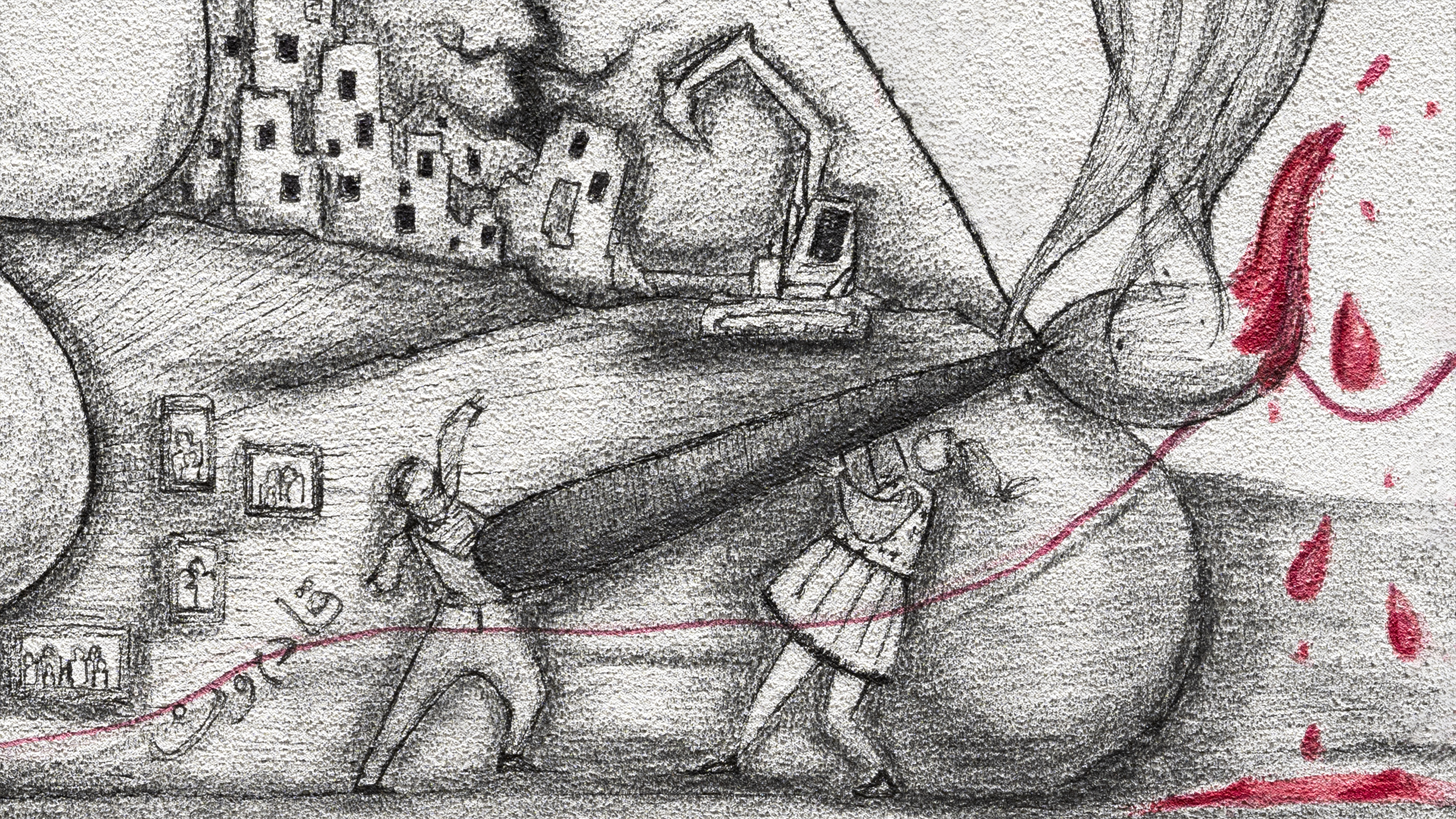A year after the massive earthquake that struck southern Turkey and northwestern Syria, resulting in the loss of 4,500 lives across various Syrian regions according to statistics published by the Syrian Civil Defense on social media, the impacts of this disaster continue until today.
The shock was not limited to the loss of human lives and properties, it also left long-term psychological and health challenges. Survivors who experienced this disaster or lost loved ones still suffer serious effects on their mental and physical health, as the 'earth tremors' persist in their lives to this day, in many different ways.
To alleviate the pain and spark optimism, some artists started painting on the ruins of buildings destroyed by the earthquake in the town of Jandaris, located in the Aleppo Governorate in northwestern Syria. This is an attempt to express the impact of the disaster and commemorate the individuals who lost their lives under the rubble, while also planting seeds of hope in the hearts of people.
Attempts to plant hope through the Art of Colors and Musical Sound
Lava Ebo, a visual artist from the city of Afrin, showcases artistic paintings that narrate the story of the catastrophic earthquake in Jandaris, using cool colors such as blue, green, and purple. Her works focus on the earthquake period and the Civil Defense efforts to rescue children and the elderly. She employs the wood-burning technique with cool colors to enhance the artistic message.
Her paintings include expressive symbols such as the names of affected areas and the hours of the disaster, along with words engraved in memory during the earthquake. She recounts an impactful scene from the earthquake, where a child under the rubble speaks to a Civil Defense volunteer, asking the child, 'What's your name, son?' She emphasizes that her paintings revolve around depicting these characters that touched her and continue to do so. She considers art as a means of communication and expression of humanity, stating that through art, they want to convey a powerful message about resilience and hope in the face of challenges, as art has no age and carries a human message that unites people without discrimination.”
“During the earthquake and its effects, I created multiple artworks in Turkey and Syria, focusing on the role of Civil Defense and the heroic moments witnessed during the disaster,” Ebo states. “I express unforgettable scenes and embody emotions in my works to passionately challenge difficulties with inspiration.”
In the same context, the artist Klastan Bozo organized an art exhibition in Jandaris, along with some colleagues and their young students. They displayed drawings conveying the destruction caused by the earthquake. The exhibition, titled "Pain and Hope," took place on March 16, 2023, approximately a month after the earthquake. Bozo chose to draw scenes that embodied the destroyed buildings, focusing on hope and determination to move forward.
“My drawings were not just an expression of pain and destruction, they also carried positive messages and a determination to overcome challenges,” Klastan says. “I held art lessons for orphaned children affected by the earthquake to help them overcome psychological traumas.”
Her drawings after the earthquake period focus on the beginning of a new life, with the central theme being positive transformation after the painful incident. She emphasizes the importance of her art as a means of communication and interaction in society, especially with children who experienced the disaster. Her drawings go beyond mere expression, serving as an effective way to communicate and unite in the face of challenges.
Songs and Musical Compositions
The artistic works extended beyond visual paintings and drawings to encompass music and performance arts, seamlessly blending sound with the catastrophic silence to narrate the cries of mothers and the stories of children. This diversity in art forms serves as a language to convey shouts of hope in the face of challenges and difficulties.
"Screams of Jandaris" is the title of a song composed by musician Khalil Abu Haji. Its lyrics capture the moment of the earthquake, echoing the sounds of fear from the residents and children. The song also narrates the unity of the people of northern Syria and organizations in providing assistance and rescue operations.
“Those were tough moments experienced by everyone, but I tried to be a voice for the silence and the language of emotions despite the state of depression and sadness I felt while playing my musical compositions,” Khalil told SyriaUntold. “I chose the keyboard instrument because it embodies all those voices and pains in its keys.”
“Whenever I think about the tragedy of orphans and the cries of mothers, my heart shrinks, and I find myself deeply moved,” he added. “Music is a way to provide moral and psychological support for our afflicted people and for us as well.”
In expressing his goal, he elaborated: “If we cannot contribute financially, music is nourishment for the soul. Through my pieces, I attempt to convey simple things regarding the suffering of the affected, to be a part of the recovery process, and to spread hope. I look forward to the future with melodies carrying messages of recovery and renewal after the earthquake.”
Artistic initiatives took on different forms within Syria and abroad, aiming to provide mental support for survivors, and some artistic initiatives offered material assistance to those impacted. Among them is the "Hand in Hand" exhibition initiative in Berlin, which presented a series of different artistic events to support and help those affected by the earthquake in northwestern Syria.
The Community and Its Perception of Artistic Initiatives
Following the devastating earthquake in the city of Jandaris, art was not only a way of aesthetic expression but also a tool for healing and interpersonal communication in times of crisis. Artistic initiatives began to emerge in the streets, where artists used the walls of damaged buildings as a canvas to express both pain and hope.
Opinions within the community varied regarding the value that art brings to communities. Some considered artistic initiatives as an effective means of expressing pain and resilience. On the other hand, some ignored the value of art or deemed it secondary in the face of crises.
Layal Ibrahim, a 30-year-old nurse living in Jandaris, in the countryside of Afrin, shares her perspective with SyriaUntold. “The moments of the earthquake left an unforgettable impact on us. We lost my brother and sister, faced destruction, and my mother still suffers from injuries to this day. The fear still lingers. The screams of people under the rubble and the scent of death haunts our memories.”
She points out that the reality left harsh psychological marks within, such as depression and anxiety. “Regarding drawings and music, they contributed to our efforts to move on from the life we experienced after the earthquake. The drawings depicting the destruction of homes or the paintings we see, especially the ones titled 'Brush of Hope,' helped us heal. We began to feel that we are not alone; people are trying to help us so that we can be okay, overcome difficulties, and continue with our lives.”
Nour Al-Din, a young man from the town of Jandaris in his twenties working as a vendor in a supermarket, said: “We didn't think about drawings or anything like that. We were trying to rescue what remained of our families trapped under the rubble. People don't need arts; they need shelter, food, and clothing after we lost everything we had."
As for Jaber, a displaced person from Aleppo working in construction, who used to be a teacher, he said while working: “On the third or fourth day, I saw artists drawing on the rubble, and this initiative was good and sweet. Art, whether it's music, drawing, or anything else, can help people forget, even for a little while, what they experienced. These initiatives were also helpful for children, helping them forget the shock they lived during the earthquake.”
“In society, there are people who appreciate art, and others who don't believe in it, but in general, art is a means of communication with the community without words, in complete silence.”
The artist Lava Ebo emphasizes “How wonderful art is as a friend and companion during crises and difficulties, a means that alleviates the psychological effects for us and the survivors of the earthquake. Through our drawings, we can provide a space for expression and interaction with the shock, positive interaction, and, of course, it is a window we escape from a painful reality towards a day we hope will be better.”













